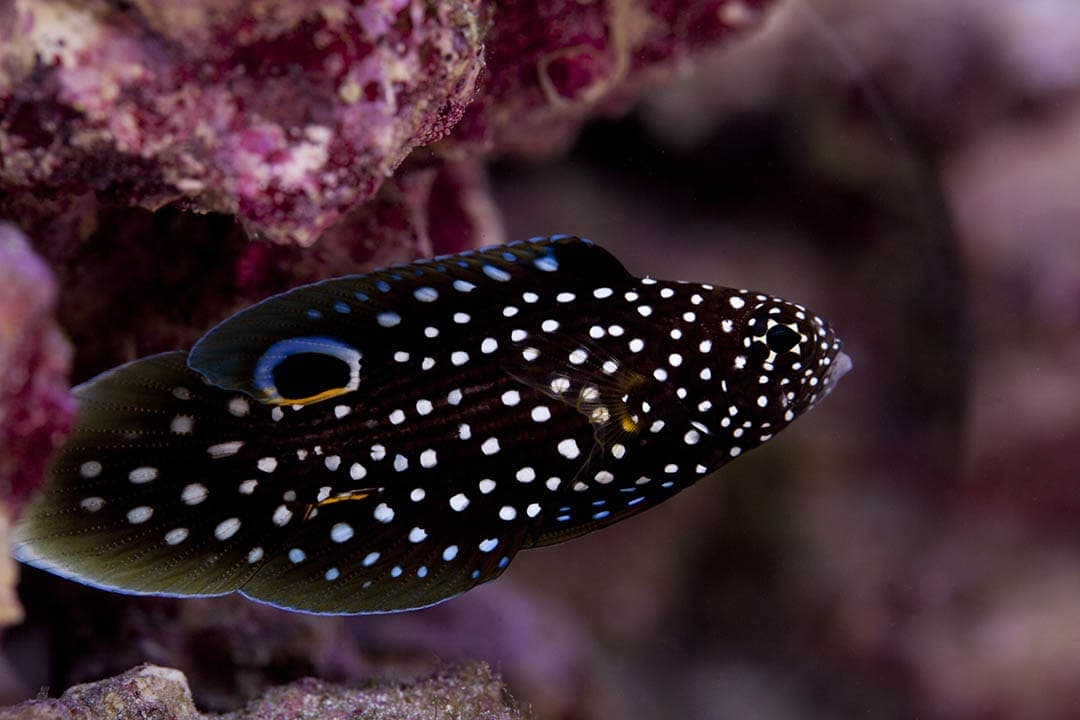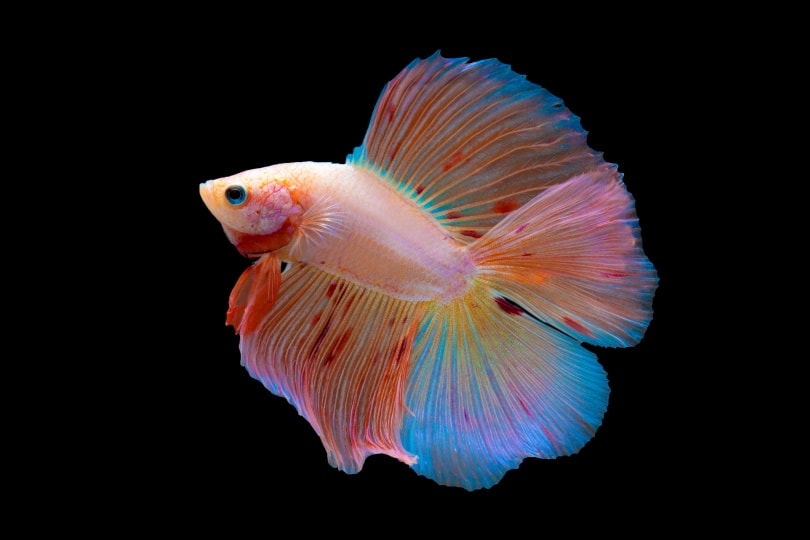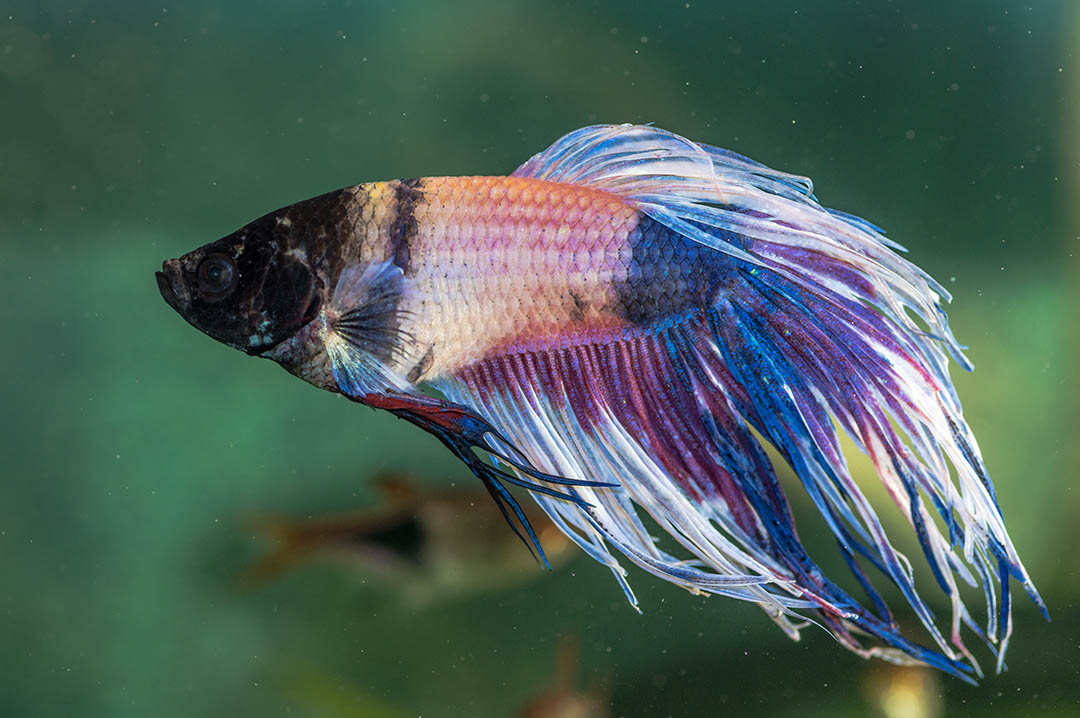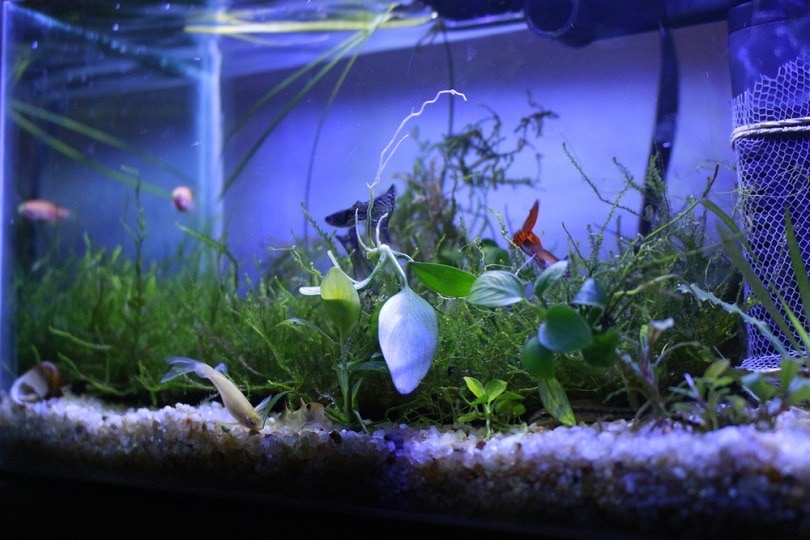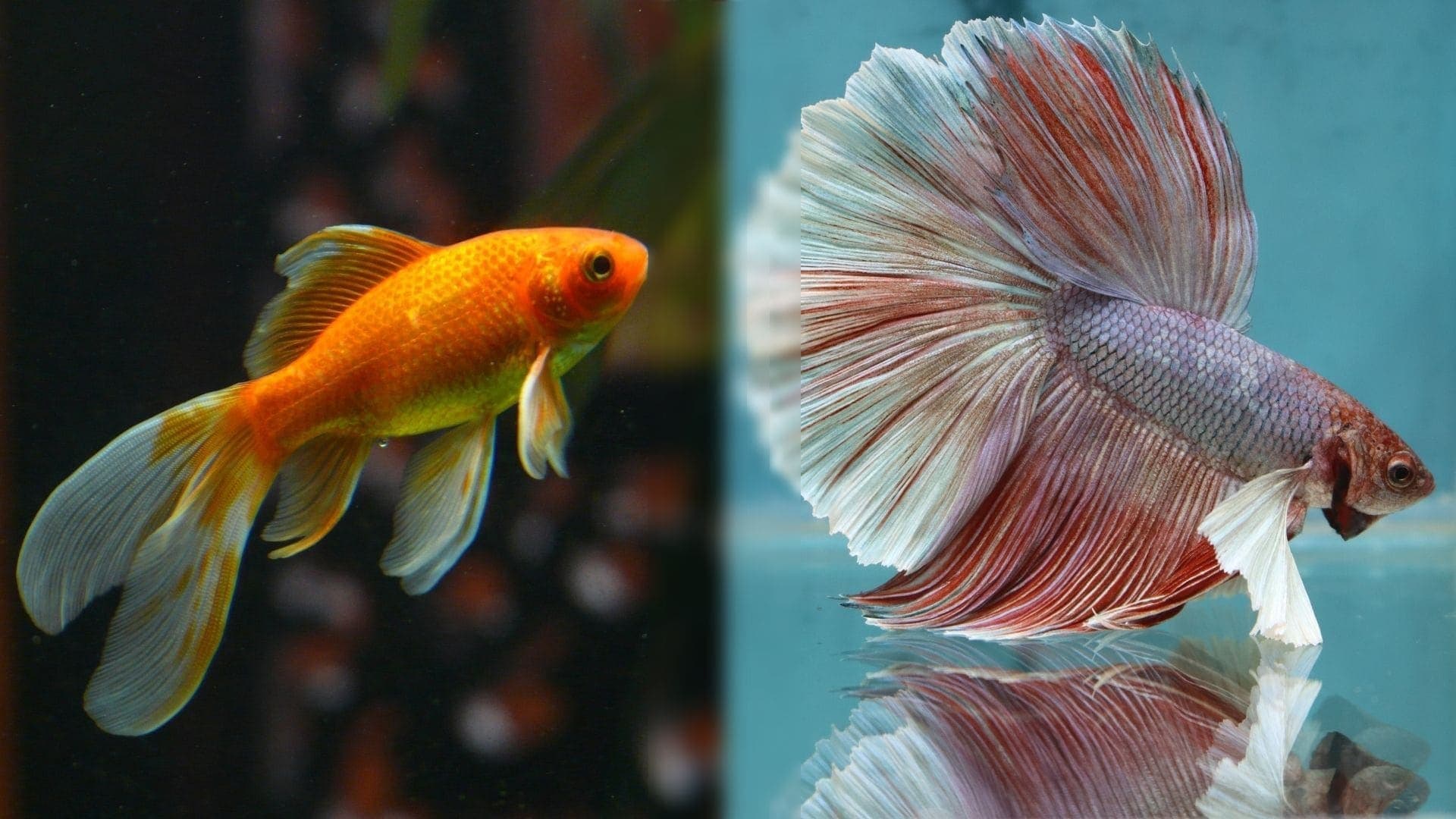Betta Fish Gill Flukes: Causes, Signs, Treatment & Prevention (Vet Answer)
By Dr. Luqman Javed, DVM (Vet)
Updated on

Click to Skip Ahead
Betta fish are often advertised as being extremely hardy—but this isn’t always the case. They are prone to a variety of different illnesses and infections. Although rare, Bettas can sometimes become infected with gill flukes. The problem is most common in community tanks, where new fish are introduced without being quarantined.
Gill flukes are tiny parasites that attach to a betta’s gills. They prefer to live in the gills, which is where they reproduce.
Without treatment, gill flukes can be deadly. They will cause wounds and sores, leading to secondary infections. Eventually, the gill flukes will infiltrate far enough into the gills to do severe, sometimes permanent, damage.
Therefore, we recommend all betta fish owners learn about this condition to spot it and treat it quickly.
What Are Gill Flukes?
The scientific name of the flatworm otherwise known as the gill fluke includes the genus Dactylogyrus. Many species of Dactylogyrus can infect nearly all freshwater fish, though they are most commonly found in carp, and infection periods peak during autumn and early winter. With over 900 species within the genus, it’s difficult to taxonomically identify all of them.
This parasite is a hermaphrodite, and therefore, it doesn’t need to mate with another parasite before reproducing. It essentially has no sex, as each parasite possesses male copulatory organs and the ability to lay eggs.

This parasite completes its entire life cycle on its host, meaning it can live its whole life on a single fish. Adult gill flukes attach to a fish’s gills and lay about four to 10 eggs each day. The duration that the eggs take to hatch depends on water temperature. They hatch in about 4 days if the water temperature is 20°C (68°F) but take several months to do so if the temperature is 2°C (35.6°F).
Once they hatch, the free-swimming parasites have a period of around 6–8 hours where they must find a host in order to survive. Once on the host, they feed, mature, and produce eggs once again.
Causes of Gill Flukes
Finding gill flukes on bettas is relatively rare and usually occurs when they’re housed in slightly lower-than-optimal conditions. At temperatures of around 28°C (82.4°F), which is ideal for bettas, the parasite tends to go into a hibernation-like state and no longer produces eggs (though juveniles are somewhat resistant at this temperature). This trait, coupled with its life cycle, means the causes of gill flukes in bettas can be attributed to one or more of the following factors:
- Your betta is housed in a less-than-ideal environment, particularly with respect to the temperature.
- You introduced an infected fish into the aquarium (this includes purchasing an already infected betta).
- You added water that was contaminated with the parasite. The adults are tiny (around 1–2 millimeters, depending on the species) and difficult to see, and the free-swimming juveniles are even smaller.
- Your aquarium setup uses a centralized water distribution system, and parasites from one aquarium are traveling to your betta’s aquarium via the current.
Signs of Gill Flukes
Gill flukes are extremely small so it is difficult to see them. They also spend most of their time hiding in the fish’s gills.
Instead, you’ll need to stay on the lookout for signs like the following.
Scraping
Fish that are infected with gill flukes tend to hold their gill covers open and rub them on a surface, such as a rock or plant, in an effort to dislodge the parasites. Unfortunately, in bettas, many owners may miss this sign or confuse it with flaring.
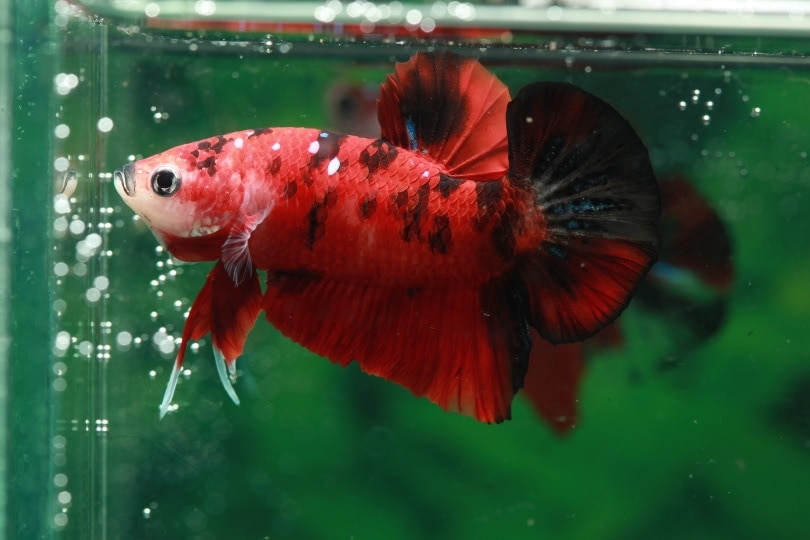
Mucus Buildup
Betta fish will try to fight the infection by coating their gills in mucus. This is a natural response to an irritant. A thickened mucus layer on the gills of a fish is often associated with the disease.
Gill Changes and Infections
Secondary infections are common with gill flukes. Their presence in the gills sometimes causes the gills to undergo permanent changes and become poorly functional. This predisposes the fish to other infections. Unfortunately, this sign is associated with a poor prognosis in fish with gill flukes.
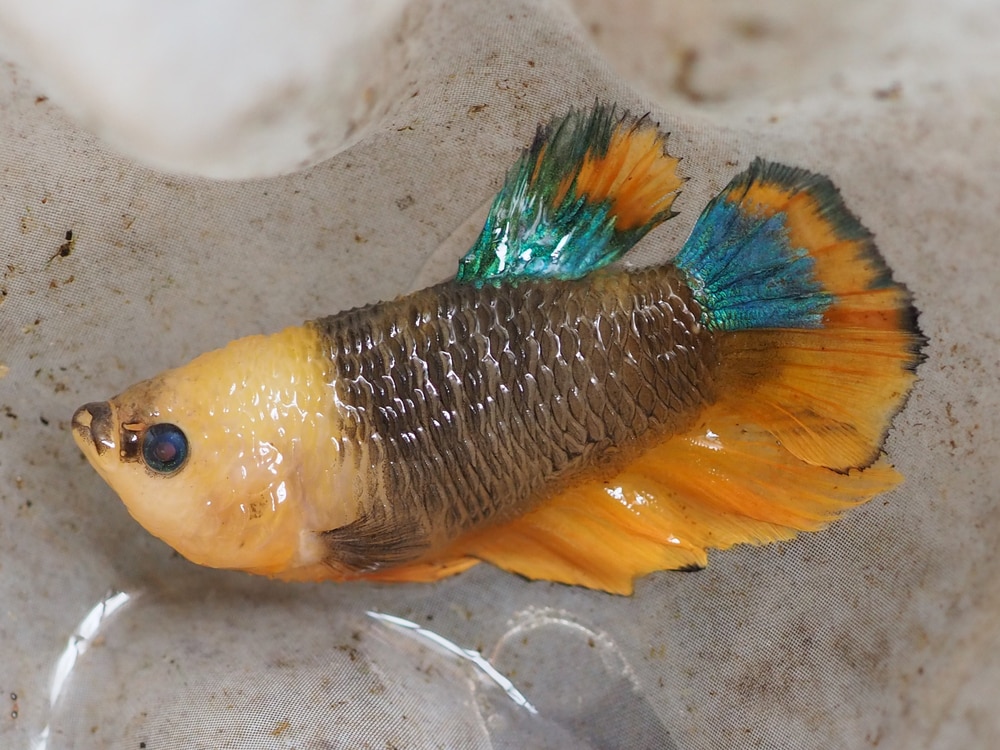
Lethargy
Fish suffering from gill flukes are often lethargic and may refuse to eat.
Abnormal Behavior
The irritation associated with flukes may sometimes cause a fish to display erratic behavior, such as randomly darting around or attempting to jump from their tank.
Many fish tend to breathe more rapidly or forcefully than normal when infected with gill flukes. However, this sign isn’t common in bettas, as they usually compensate for poorly functioning gills by using their labyrinth organ to breathe.
None of these signs are unique to gill flukes, and proper diagnosis (if required) involves a veterinarian sampling a fish’s gills to examine the parasite. This often involves humanely euthanizing the most debilitated fish in the tank.

Treatment
Treating gill flukes is difficult because the eggs are extremely resistant to medication, and most treatment requires control with the use of chemicals. Examples include:
- Salt baths
- Formalin
- Fenbendazole
- Praziquantel
- Bromex-50
- Potassium permanganate
Many of the most effective chemicals used to treat this problem are prescribed by veterinarians and aren’t available in pet stores. For products that are available in pet stores, you should follow the directions on the product label. Although certain herbal products have been used to treat this condition with varying levels of success in goldfish, such tests haven’t been performed on bettas yet.
Many chemicals are neutralized by carbon filtration in an aquarium, so you should remove your filter’s carbon filter before attempting to treat this parasite. As a rule, you should treat the entire aquarium (if you are housing multiple fish). It is best to quarantine fish being treated in individual aquariums to limit the number of parasites that they spread to their tank mates.
The ideal betta temperature is considered an extreme for this parasite, and they may naturally stop producing eggs in such conditions. This can make control somewhat easier in a betta’s tank.
A somewhat controversial approach involves exploiting the parasite’s necessity of a host. If you have a spare tank, moving your betta between the two aquariums on a 5-day interval period can help break the cycle of the parasite much faster. If you have a community setup, all fish must be transported to and from the spare tank, making this option cumbersome for community setups. The spare tank should be cycled and ready for fish before being used. This option doesn’t guarantee parasite removal and may also disrupt the natural cycle of your tank, which is why it isn’t often advised and remains controversial.
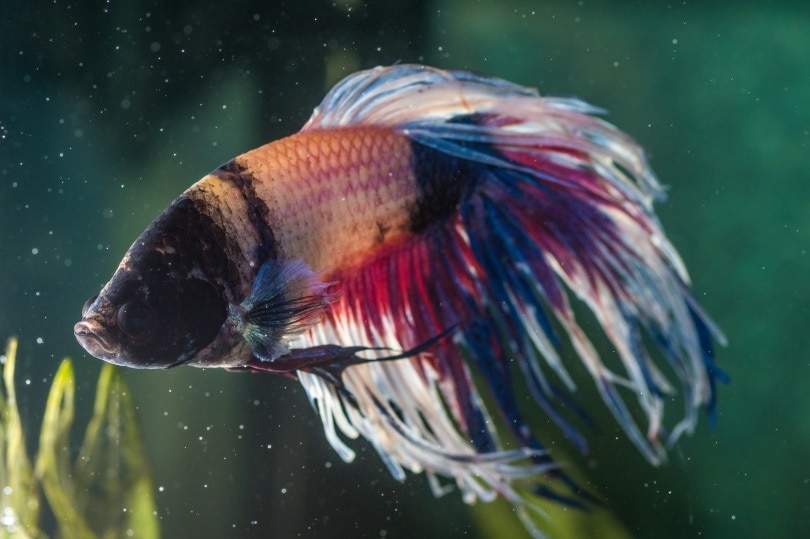
Prevention
Several steps can be taken to prevent this parasite from gaining access to your aquarium.
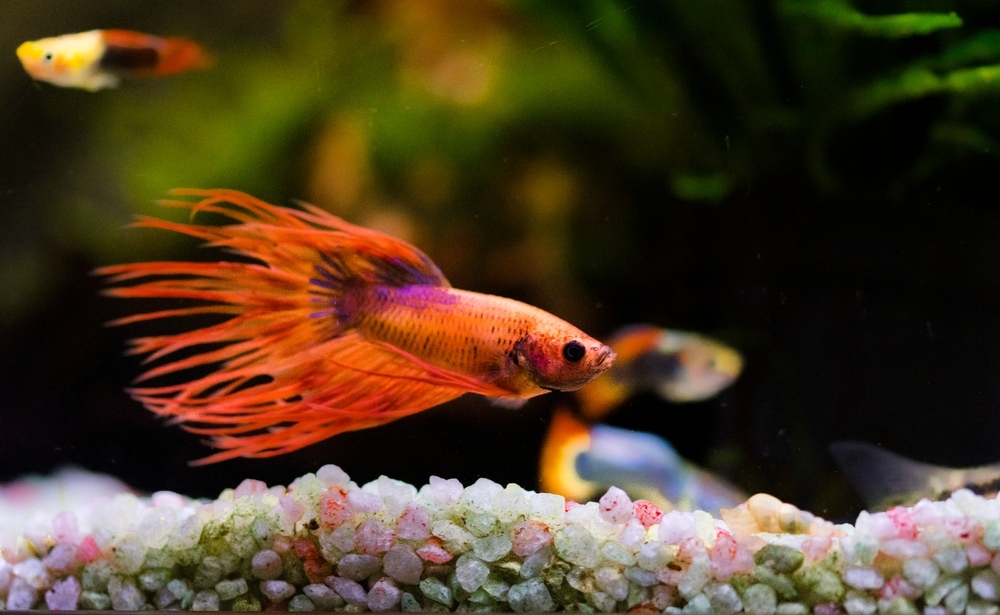
Quarantine All New Fish and Plants
As parasites, these little bugs have to be introduced to your tank. Typically, this is done by introducing new fish into the tank that are infected.
You should separate all new fish (and plants) from your new tank for at least 4–6 weeks. This time allows infections to become apparent, which you can then treat before adding the fish or plant to your tank. Treating a single quarantined fish is much easier than dealing with an entire infected tank.

Keep Your Betta in Appropriate Conditions
Housing your betta in an appropriate aquarium at 28°C (82.4°F) will greatly reduce the reproductive performance of the parasite. It also tends to rely on currents to find a host, so keeping a gentle current in your Betta’s aquarium may be beneficial to slow their movement (that said, the parasite can swim, and even a fast current doesn’t guarantee prevention).
Performing regular water changes ensures that your Betta’s water stays optimal and can help remove free-swimming parasites.
Conclusion
Gill flukes are relatively rare in bettas and often indicate a poorly kept fish and a lack of good quarantine practices. While it’s treatable, the parasite can lead to permanent alterations of the gills. Since its eggs are resistant to medicine, prevention remains the primary way to control gill flukes. If you do suspect the parasite’s presence in your aquarium, you should promptly seek advice from your aquatic veterinarian for a diagnosis and prescription treatment options.
See also:
Featured Image Credit: Benzstock, Shutterstock




